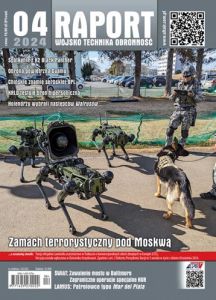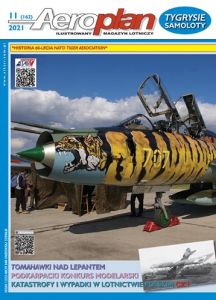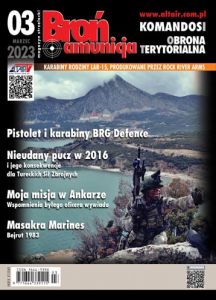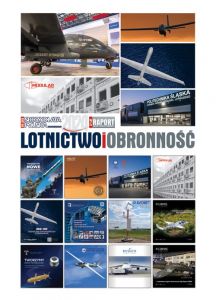Aviation Office
The Border Guard (SG) has 13 aircraft deployed along the northern and eastern borders in five Aviation Departments.
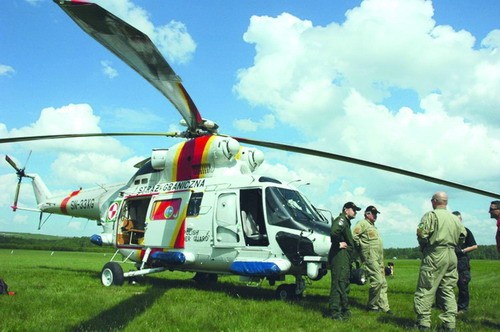
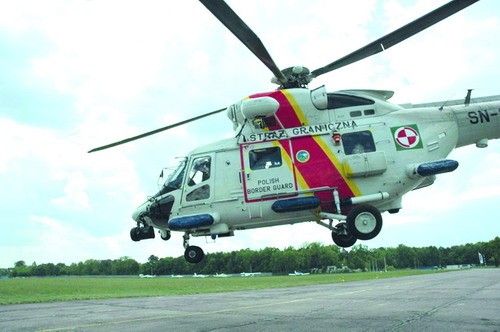
They are:
- I Aviation Department (I WL) at Gdańsk (Naval Section of the SG):
- 1 M-28 Skytruck aeroplane
- 1 M-20 Mewa aeroplane
- 1 W-3W Anakonda helicopter
II WL at Kętrzyn (Warmia-Mazury Section of the SG):
- 1 Wilga 2000 MF aeroplane;
- 1 Kania helicopter;
III WL at Białystok (Podlasie Section of the SG):
- 1 Wilga 2000 MF aeroplane;
- 1 Kania helicopter;
IV WL at Hrubieszów (Bug river Section of the SG):
- 2 Wilga 2000 MF aeroplanes, based at Depułtycze Królewskie landing ground
- 1 Kania helicopter;
V WL at Huwniki (Bieszczady Section of the SG):
- 2 Kania helicopters;
- 1 W-3 Sokół helicopter.
Additionally, the SG has a Technical Servicing Base at Nowy Sącz.
The main problem of the Aviation Office is access to spare parts for aircraft. This is due to the fact that the aircraft fleet of the SG, except the M-28 aeroplane, consists mainly of prototypes or aircraft types no longer in production. Most of these are not operated outside the Border Guard. Moreover, the companies that have built the aircraft used by the SG are mostly no longer in existence or have been taken over by other consortia. This means that in many cases production or regeneration of spare parts takes very long and their cost is increased. Very often if a company can be found that is interested in manufacturing or regenerating the parts, the contract takes several months or even more than a year. Some spares are simply impossible to obtain and rapidly diminishing modest stores from previous production are used.
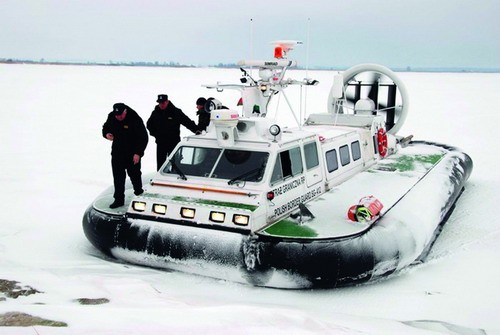
All this means that for further proper operation of the SG aviation it will seem necessary to procure several helicopters and aeroplanes. Preferably this should be equipment coming from renowned companies making large numbers of aircraft. It is also planned to establish an own flying training centre.
For this, light helicopters (one or two) will be needed to train air crews. Currently the SG outsources these services, incurring high expenses.
Border Guard experiences difficulties in obtaining skilled helicopter pilots. Soon most of its current helicopter pilots will reach retirement age. Steps have been taken to rejuvenate our cadre of pilots. Last year five helicopter pilots have been trained, their age no higher than 35. They are currently at the stage of CPL(H) licence practical exams.
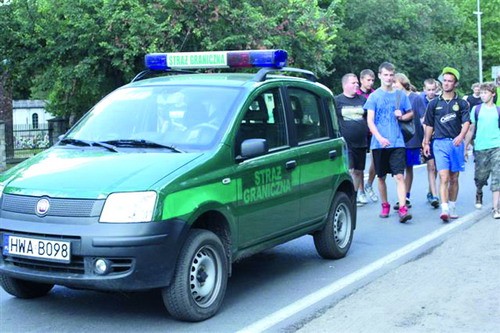

Additionally, it was possible to purchase 32 sets of night vision goggles and a portable tester for optical systems of optical devices. The total cost was over 1.5 million zlotys. Money for the procurement was mostly supplied from the FRONTEX fund. For a number of years Border Guard aircraft have actively participated in foreign missions under the aegis of the FRONTEX Agency.
Technology and Supply Office
During 2009-2011, as part of projects from the Norwegian Financial Mechanism, the External Borders Fund and the Police Modernisation Program Law (…), the Border Guard has procured the following vehicles:
- Motorcycles - 100
- Snowmobiles - 20
- ATV - 40
- Road patrol (cars) - 265
- Specialised (Schengen-Bus) - 32
- Off road patrol - 35
- Vans - 29
- Arrested persons transport - 25
- Trucks up to 3.5 tonne load - 15
- Patrol pick-up trucks - 16
Altogether over 570 various vehicles were procured for over 50 million zlotys.
Procurement of modern transport equipment has largely helped the Border Guard to introduce modern vehicles and replace the worn out ones.
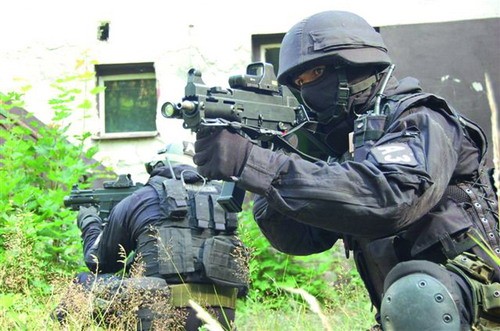
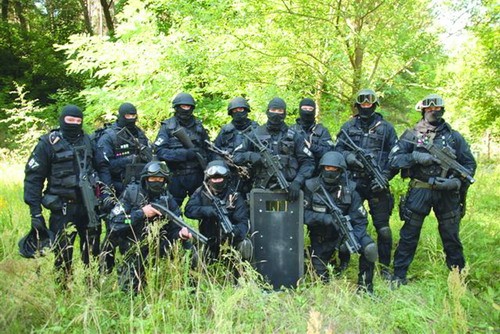
The following equipment and uniform items are planned to be purchased in 2011, apart from decentral procurements (bid procedures have been started):
- 32 sets - bullet-proof vests with hard ballistic armour
- 1 set - bomb disposal robot
- 2 sets - bomb disposal suits
- 1 set - video-endoscope
- 1 set - explosives and narcotics detection device
- 1 set - specialised equipment for the bomb disposal team
- peaked caps - 495
- footwear - 200 pairs
- field dress with BORDER GUARD emblems - 1400 sets
- black leather belts - 400
- field caps - 1120
- airborne troop footwear - 850 pairs
- membrane insulated boots - 2000 pairs
- high visibility vests - 613
- operating-tactical vests - 300
All information regarding the planned procurements of uniform items, special equipment, transport equipment are available at www.strazgraniczna.pl, public contracts tab.
Due to financial limitations caused by money saving actions, during 2010-2011 uniform items were only procured for newly joining Border Guard officers. Issues to officers who had already been in service were cut down to minimum. The numbers of items listed above provide for initial equipment of those newly appointed into service and for necessary specialist uniforms.
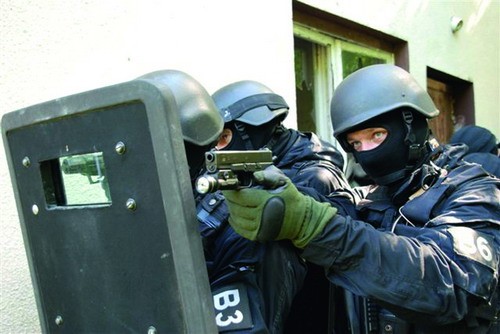
The items used by officers meet their expectations. In particular, the bad weather clothing and membrane insulated boots, made from waterproof, vapour permeable and wind-protecting materials.
Additionally, 2011 saw introduction of the bad weather jacket with lining in the standard kit, replacing the Mk 93 field jacket with lining and officer's cape. The item will be procured as of 2012.
Communications and IT Office
The Border Guard has large numbers of tele-IT, radio-communications and opto-electronic devices. The equipment is used to perform the tasks of the SG.
Tele-IT devices are located at users' terminals, in IT centres and in the Central IT Node which has over 300 m2 server area.
The most representative devices in the Border Guard include:
- P7XX and P5XXX class servers;
- several hundred blade servers, mostly IBM or CISCO;
- new EMC type Clarion matrixes and older IBM DS;
- Enterprise class networking devices (switches, routers), mostly CISCO or IBM;
- apart from an own WAN based on MPLF technology (including IP telephony) an Enterprise class WLAN CISCO MESH is undergoing expansion in border crossings;
- several thousand PC class computers and NC type terminals from various makers;
- Panasonic rugged type mobile terminals, vehicle-mounted mobile terminals;
- several thousand stationary and mobile e-document readers (mostly Polish production from VICOMP);
- stationary and mobile biometric fingerprint readers (mostly L4 or Sagem);
- thermal imaging cameras - several hundred;
- land border line observation tower systems;
- digital radio-telephones (ETSI DMR standard) - over a thousand;
- Mobile Supervision Units (observation vehicles) - several dozen; the vehicles are also used in Frontex missions in other EU countries;
Automated Radar Control System for Polish naval areas consisting mainly of radars, thermal imaging and low light cameras, VHF SG and GMDSS radio communication devices, and perimeter system on Vistula Spit. The system covers the entire Polish coast with constant radar control.
Plans for the near future include:
- construction of a Backup IT Nod;
- fitting the remaining border crossings with the WLAN;
- virtualisation of server environments;
- completion of DMR digital communication.
Greatest problems are caused by the shortage of specialists and by high costs of software and of system integration. One should also mention the cost of repair of the opto-electronic equipment that sometimes exceeds the value of the devices.
Photos: Border Guard
